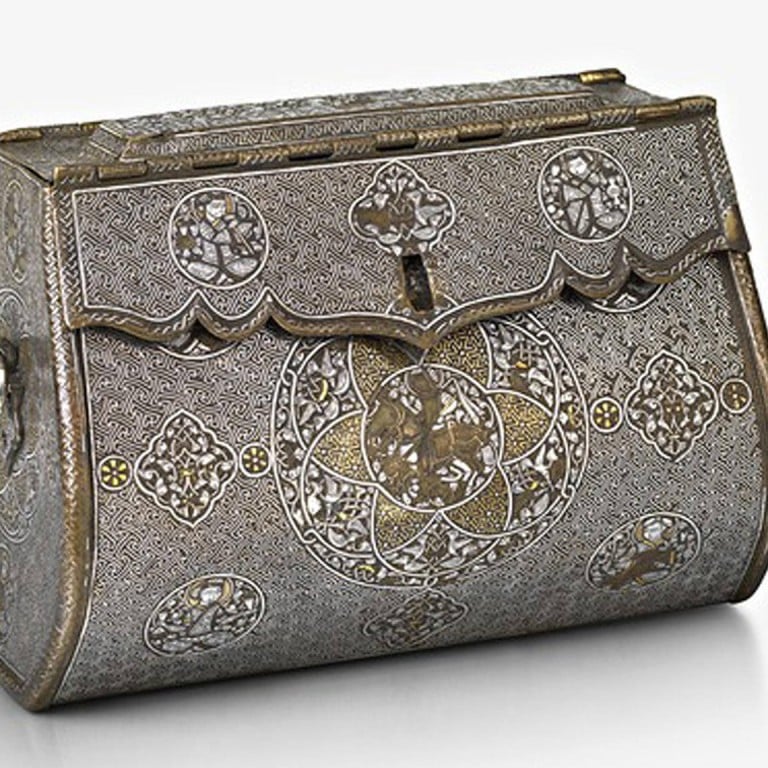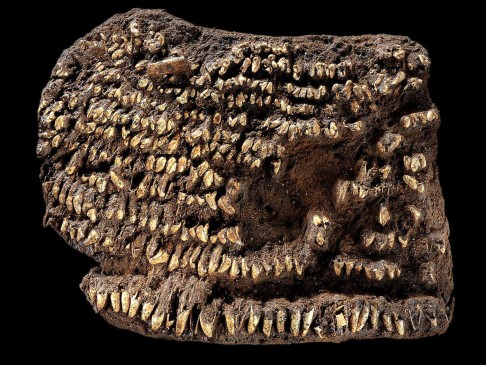
London’s Courtauld Gallery confirms relic as possibly world’s oldest handbag
Mysterious fashion accessory, inlaid with gold and silver, is confirmed as perhaps the oldest existing handbag by London's Courtauld Gallery
Over the years it has been identified as an oriental box, a work basket, a document wallet and even a saddle bag.

New research suggests that the stunning and remarkably well-kept brass woman's bag, inlaid with gold and silver, was made between 1300 and 1330 in Mosul, in what is now northern Iraq, during its Mongol-run period. The bag has been a prized object in the Courtauld's collection since 1966.
"It is one of the finest and best preserved examples of inlaid metalwork in the world," said Rachel Ward, who has been leading research into the bag.
What was not certain was exactly what it was. "It is a fantastic object and yet it is almost unknown because there's always been this puzzlement over what it is, who it was made for, when it was made, where it was made.
"So it hasn't been used in things like general introductory books because you didn't know what chapter to put it in."

The key to unlocking its secret is an unusual panel on the top showing a nobleman and woman and their attendants. One of those, a smiling page boy, has the bag around his shoulder.
Wider research by Ward has turned up considerable visual evidence of bag-carrying page boys next to noblewomen, but never alongside men.
"Other people in the past have called it everything from a work basket to a document wallet and, inevitably, male academics always assume it was for a man.
"I'm saying it's a lady's bag. It is the forerunner of a designer bag. The only difference between a modern and expensive designer bag and this one is that you get a bag-carrier to go with it."
Ward said she could only imagine what the woman would have carried in the bag, but said it would probably be similar to what women carry now - a few gold coins in case of tips, make-up and items the holder does not want on display.
The Mongols, who had an empire that stretched from Russia to China, did not convert to Islam until 1295 and even then, wore their religion lightly.
Women were important members of Mongol society.
General revelry and drinking was a popular pastime, with some academics speculating that alcohol played a significant role in the dynasty's demise.
The bag was acquired by the Victorian collector Thomas Gambier Parry in 1858 and was bequeathed to the Courtauld Gallery by his grandson in 1966. Having been cleaned, the bag will feature in a new exhibition telling its story, which opened to the public yesterday.
The identification of the handbag comes two years after the discovery of the remains of what was touted as the world's oldest purse at a dig near Leipzig in Germany.
All that remained of the artifact were the neatly arrayed decorations that covered its outer flap - more than 100 dog's teeth.
The item was found in a grave dated between 2,500BC and 2,200BC. Harald Strauble, of Germany's Saxon State Archaeology Office, said at the time that dog's teeth were a common stone age decoration that "seem to have been fashionable back then".
